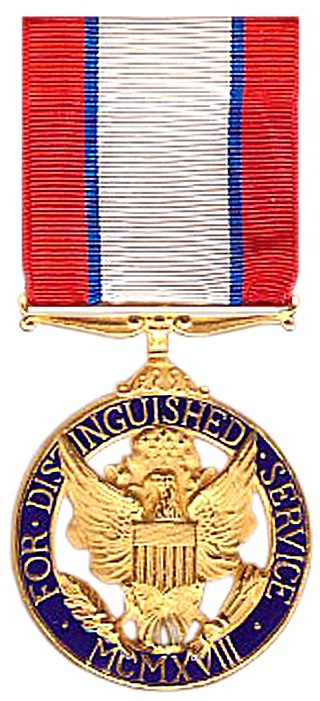
The Distinguished Service Medal (DSM) is a military decoration of the United States Army that is presented to soldiers who have distinguished themselves by exceptionally meritorious service to the government in a duty of great responsibility. The performance must be such as to merit recognition for service that is clearly exceptional. The exceptional performance of normal duty will not alone justify an award of this decoration.

The Distinguished Flying Cross (DFC) is a military decoration of the United States Armed Forces. The medal was established on July 2, 1926, and is currently awarded to any persons who, after April 6, 1917, distinguish themselves by single acts of heroism or extraordinary achievement while participating in aerial flight. Both heroism and extraordinary achievement are entirely distinctive, involving operations that are not routine. The medal may be awarded to friendly foreign military members in ranks equivalent to U.S. Pay Grade of O-6 and below, in actual combat in support operations.

Robert Lee Stewart is a retired brigadier general of the United States Army and a former NASA astronaut.

Uniformed Services University of the Health Sciences (USU) is a health science university of the U.S. federal government. The primary mission of the school is to prepare graduates for service to the U.S. at home and abroad as uniformed health professionals, scientists and leaders; by conducting cutting-edge, military-relevant research; by leading the Military Health System in key functional and intellectual areas; and by providing operational support to units around the world.
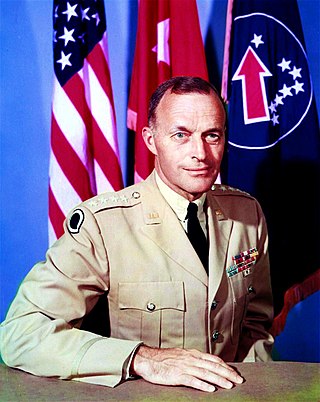
John Knight Waters was a United States Army four-star general who served as commander, U.S. Army, Pacific from 1964 to 1966. He was also the son-in-law of General George S. Patton. During World War II, he was taken prisoner while fighting in Tunisia in 1943, leading Patton to set up the controversial Task Force Baum to break him out.
The Brotherhood of War is a series of novels written by W. E. B. Griffin, about the United States Army from the Second World War through the Vietnam War. The story centers on the careers of four U.S. Army officers who became lieutenants in the closing stages of World War II and the late 1940s. The series is notable for the amount of attention it does not devote to combat. Rather than skipping forward, it follows the main characters though their peacetime service as the army evolves in the 1940s, 1950s and 1960s, particularly in the development of Army Aviation and the Special Forces.

Hamilton Hawkins Howze was a general in the United States Army. He was a developer and advocate of helicopter-borne air mobility warfare.

Major General Kenneth Lloyd Farmer Jr. commanded Walter Reed Army Medical Center and North Atlantic Regional Medical Command from June 2004 to August 2006.

Hispanic Americans, also referred to as Latinos, served in all elements of the American armed forces in the war. They fought in every major American battle in the war. Between 400,000 and 500,000 Hispanic Americans served in the U.S. Armed Forces during World War II, out of a total of 16,000,000, constituting 3.1% to 3.2% of the U.S. Armed Forces. The exact number is unknown as, at the time, Hispanics were not tabulated separately, but were included in the general white population census count. Separate statistics were kept for African Americans and Asian Americans.

The term military medicine has a number of potential connotations. It may mean:

John Revell "Jack" Dailey is a retired United States Marine Corps four-star general who served as Assistant Commandant of the Marine Corps (ACMC) and Chief of Staff from 1990 to 1992, Acting Associate Deputy Administrator of the National Aeronautics and Space Administration (NASA) from 1992 to 1999; and director of the National Air and Space Museum (NASM) from 2000 to 2018.

Hal Bruce Jennings, Jr. was an American plastic surgeon who served as Surgeon General of the United States Army from October 10, 1969, to September 30, 1973.

Ann Elizabeth Dunwoody is a retired general of the United States Army. She was the first woman in United States military and uniformed service history to achieve a four-star officer rank, receiving her fourth star on November 14, 2008.
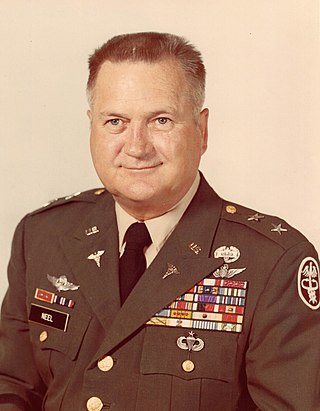
Major General Spurgeon Neel, MD, was a United States Army physician who pioneered the development of aeromedical evacuation of battlefield casualties.
This article is about the role played by women in the military in the Americas, particularly in the United States and Canada from the First World War to modern times.
Hispanics in the United States Air Force can trace their tradition of service back to the United States Army Air Forces (USAAF), the military aviation arm of the United States Army during and immediately after World War II. The USAAF was the predecessor of the United States Air Force, which was formed as a separate branch of the military on September 18, 1947, under the National Security Act of 1947. In the U.S., the term Hispanic categorizes any citizen or resident of the United States, of any racial background, of any country, and of any religion, who has at least one ancestor from the people of Spain or is of non-Hispanic origin but has an ancestor from Mexico, Puerto Rico, Cuba, Central or South America, or some other Hispanic origin. The three largest Hispanic groups in the United States are the Mexican-Americans, Puerto Ricans, and Cubans. According to the U.S. Census Bureau the estimated Hispanic population of the United States is over 50 million, or 16% of the U.S. population, and Hispanics are the nation's largest ethnic minority. The 2010 U.S. census estimate of over 50 million Hispanics in the U.S. does not include the 3.9 million residents of Puerto Rico, thereby making the people of Hispanic origin the nation's largest ethnic or race minority as of July 1, 2005.
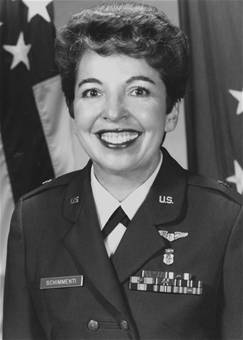
Brigadier General Carmelita Vigil-Schimmenti is a retired officer of the United States Air Force, who in 1985 became the first Hispanic female to attain the rank of Brigadier General. Vigil-Schimmenti was the Chief of the United States Air Force Nurse Corps, Office of the Surgeon General; Headquarters U.S. Air Force, Washington, D.C.
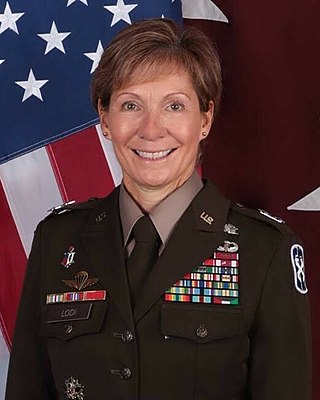
Paula C. Lodi is a United States Army major general who serves as Commanding General of the 18th Medical Command since June 15, 2022. She previously served as Deputy Commanding General for Support of the United States Army Medical Command from July 2021 to May 2022. Lodi was the first female commander of the 44th Medical Brigade. She is also the younger sister of Lieutenant General Maria Barrett. Lodi and Barrett are the United States Army's first ever sister General Officer tandem.

Van Hixson was a retired United States Army major general. A veteran Army aviator, he flew B-17 bombers during World War II and later served as The Adjutant General of the Utah National Guard from November 1980 to September 1982.




















